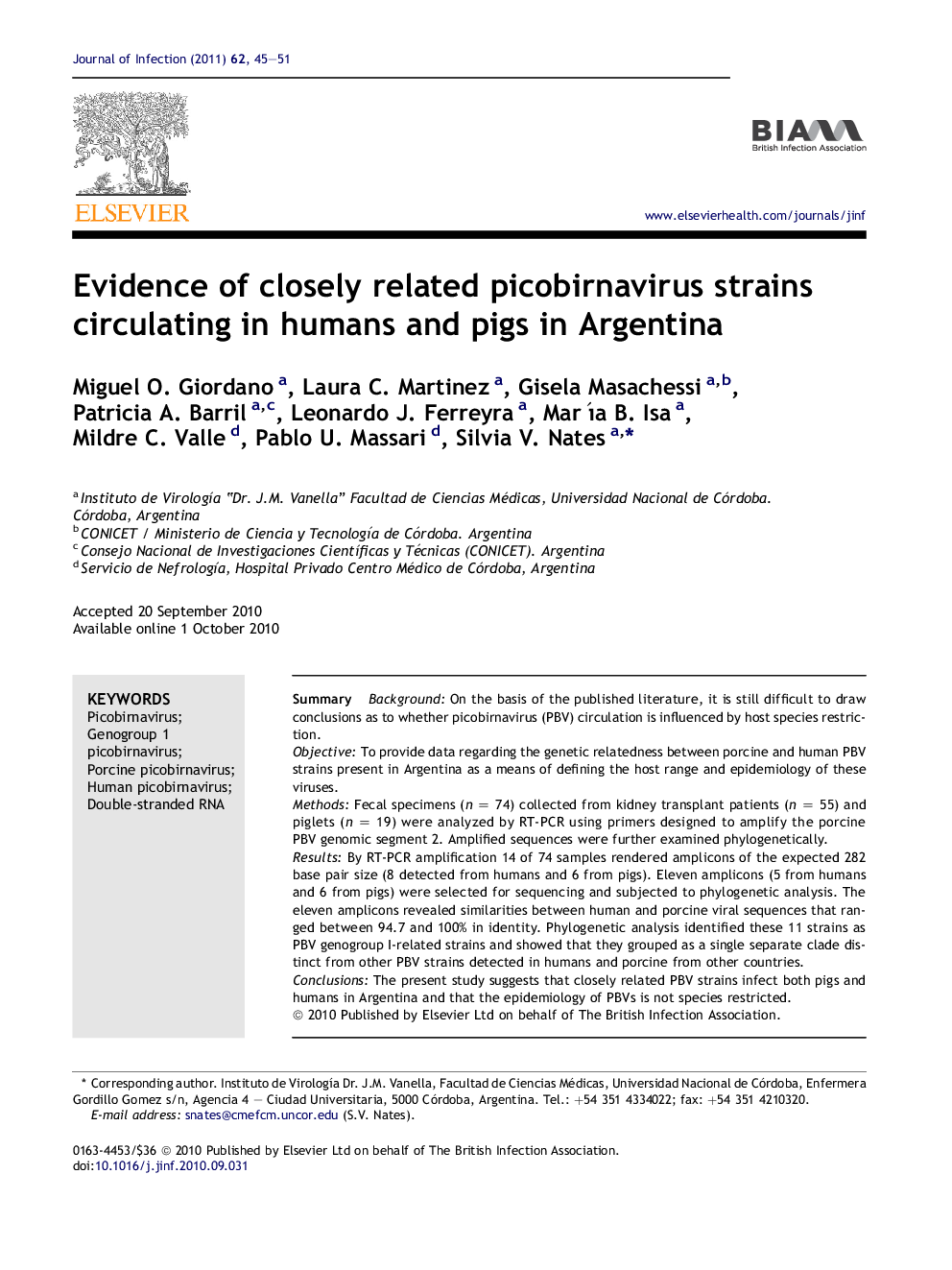| Article ID | Journal | Published Year | Pages | File Type |
|---|---|---|---|---|
| 3375549 | Journal of Infection | 2011 | 7 Pages |
SummaryBackgroundOn the basis of the published literature, it is still difficult to draw conclusions as to whether picobirnavirus (PBV) circulation is influenced by host species restriction.ObjectiveTo provide data regarding the genetic relatedness between porcine and human PBV strains present in Argentina as a means of defining the host range and epidemiology of these viruses.MethodsFecal specimens (n = 74) collected from kidney transplant patients (n = 55) and piglets (n = 19) were analyzed by RT-PCR using primers designed to amplify the porcine PBV genomic segment 2. Amplified sequences were further examined phylogenetically.ResultsBy RT-PCR amplification 14 of 74 samples rendered amplicons of the expected 282 base pair size (8 detected from humans and 6 from pigs). Eleven amplicons (5 from humans and 6 from pigs) were selected for sequencing and subjected to phylogenetic analysis. The eleven amplicons revealed similarities between human and porcine viral sequences that ranged between 94.7 and 100% in identity. Phylogenetic analysis identified these 11 strains as PBV genogroup I-related strains and showed that they grouped as a single separate clade distinct from other PBV strains detected in humans and porcine from other countries.ConclusionsThe present study suggests that closely related PBV strains infect both pigs and humans in Argentina and that the epidemiology of PBVs is not species restricted.
